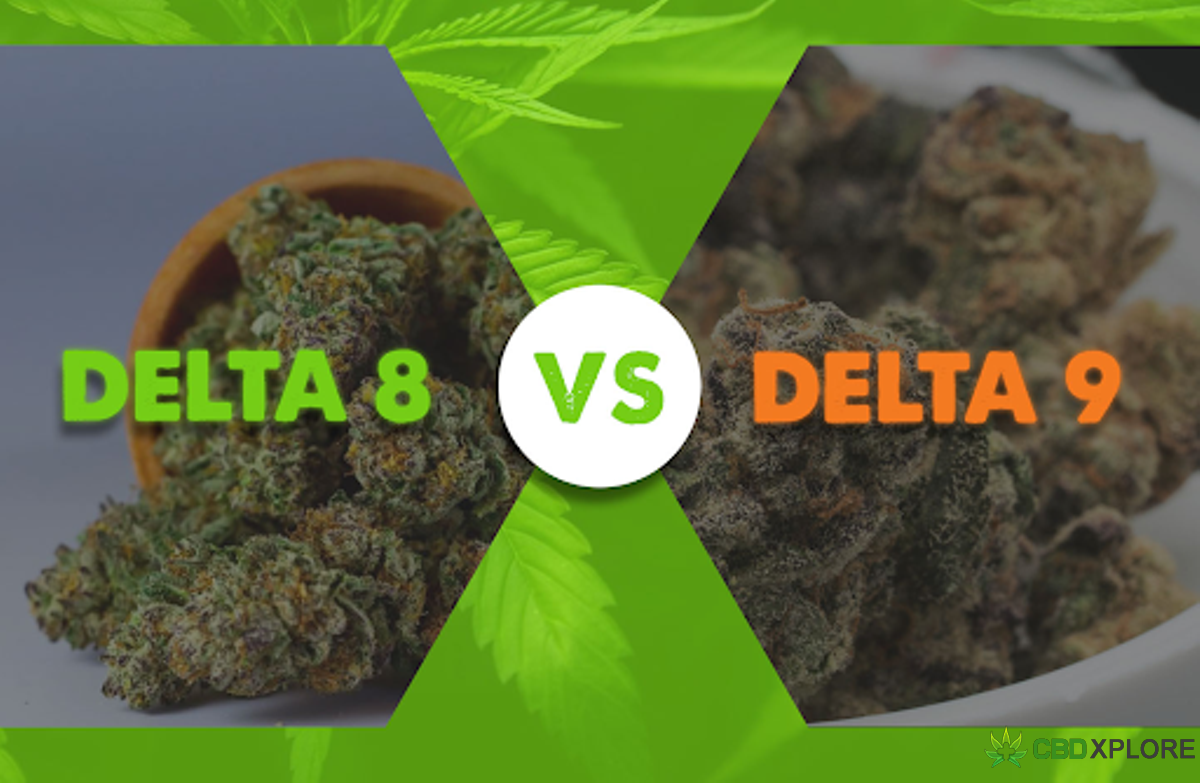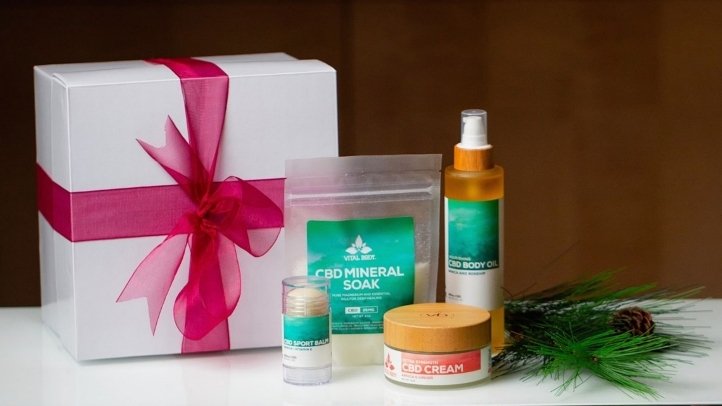Full-Spectrum vs Broad-Spectrum CBD: Which One is More Effective?
In this comprehensive guide, we’ll dive deep into the differences between Full-Spectrum vs Broad-Spectrum CBD, their benefits, and how to choose the right one

The world of CBD (cannabidiol) has exploded in popularity over the past few years, with countless products flooding the market. As consumers become more educated about the benefits of CBD, they are also becoming more discerning about the types of CBD they choose. Two of the most popular options are Full-Spectrum vs Broad-Spectrum CBD. But what exactly do these terms mean, and which one is more effective? In this comprehensive guide, we’ll dive deep into the differences between Full-Spectrum vs Broad-Spectrum CBD, their benefits, and how to choose the right one for your needs.
Explore the Contents
- 1 Understanding CBD: A Brief Overview
- 2 What is Full-Spectrum CBD?
- 3 What is Broad-Spectrum CBD?
- 4 Full-Spectrum vs Broad-Spectrum CBD: Key Differences
- 5 Which One is More Effective: Full-Spectrum or Broad-Spectrum CBD?
- 6 How to Choose Between Full-Spectrum and Broad-Spectrum CBD
- 7 Conclusion: Full-Spectrum vs Broad-Spectrum CBD
Understanding CBD: A Brief Overview
Before we delve into the specifics of Full-Spectrum vs Broad-Spectrum CBD, it’s important to understand what CBD is. CBD is one of over 100 cannabinoids found in the cannabis plant. Unlike THC (tetrahydrocannabinol), CBD is non-psychoactive, meaning it won’t get you “high.” Instead, it’s praised for its potential therapeutic benefits, such as reducing anxiety, alleviating pain, and improving sleep.
CBD products are typically derived from hemp, a variety of cannabis that contains less than 0.3% THC. However, not all CBD products are created equal. The terms “Full-Spectrum” and “Broad-Spectrum” refer to the range of cannabinoids, terpenes, and other compounds present in the product, which can significantly impact its effectiveness.
What is Full-Spectrum CBD?
Full-Spectrum CBD contains all the naturally occurring compounds found in the cannabis plant, including cannabinoids, terpenes, flavonoids, and trace amounts of THC (less than 0.3%). This combination of compounds is believed to work together synergistically, creating what’s known as the “entourage effect.”
Key Features of Full-Spectrum CBD:
- Contains THC: While the THC content is minimal, it’s enough to enhance the therapeutic effects of CBD.
- Rich in Cannabinoids: Includes CBD, CBG, CBN, and others, each with unique benefits.
- Terpenes and Flavonoids: These compounds contribute to the aroma, flavor, and therapeutic properties of the product.
- Entourage Effect: The synergistic interaction between all compounds may enhance the overall effectiveness of the product.
Benefits of Full-Spectrum CBD:
- Enhanced Therapeutic Effects: The entourage effect may make Full-Spectrum CBD more effective for conditions like chronic pain, inflammation, and anxiety.
- Natural Composition: Retains all the beneficial compounds found in the hemp plant.
- Wide Range of Uses: Suitable for those seeking comprehensive relief from multiple symptoms.
Drawbacks of Full-Spectrum CBD:
- Trace THC Content: While legal, the presence of THC may be a concern for those subject to drug testing or sensitive to THC.
- Strong Flavor: The natural terpenes can result in a strong, earthy taste that some may find unpleasant.
What is Broad-Spectrum CBD?
Broad-Spectrum CBD is similar to Full-Spectrum CBD in that it contains multiple cannabinoids and terpenes. However, it undergoes additional processing to remove all traces of THC. This makes it an ideal option for those who want to experience the benefits of the entourage effect without any THC.
Key Features of Broad-Spectrum CBD:
- THC-Free: All THC is removed, making it a safer option for those concerned about drug tests or THC sensitivity.
- Multiple Cannabinoids: Retains CBD, CBG, CBN, and other beneficial compounds.
- Terpenes and Flavonoids: Like Full-Spectrum, it includes these compounds for added benefits.
- Entourage Effect: While slightly diminished due to the absence of THC, the entourage effect is still present.
Benefits of Broad-Spectrum CBD:
- No THC: Ideal for those who want to avoid THC entirely.
- Entourage Effect: Offers many of the same benefits as Full-Spectrum CBD without the risk of THC exposure.
- Versatile: Suitable for a wide range of users, including those with strict THC restrictions.
Drawbacks of Broad-Spectrum CBD:
- Slightly Less Potent: The absence of THC may reduce the overall effectiveness of the entourage effect.
- Processing: The additional steps to remove THC may result in a less natural product compared to Full-Spectrum CBD.
Full-Spectrum vs Broad-Spectrum CBD: Key Differences
When comparing Full-Spectrum vs Broad-Spectrum CBD, the primary difference lies in the presence of THC. Here’s a breakdown of the key distinctions:
| Feature | Full-Spectrum CBD | Broad-Spectrum CBD |
|---|---|---|
| THC Content | Contains trace amounts (≤0.3%) | THC-free |
| Entourage Effect | Stronger due to THC presence | Present but slightly weaker |
| Cannabinoid Profile | Includes all cannabinoids | Includes most cannabinoids |
| Ideal For | Those seeking maximum benefits | THC-sensitive individuals |
| Drug Testing | May cause a positive result | Unlikely to cause a positive result |
Which One is More Effective: Full-Spectrum or Broad-Spectrum CBD?
The effectiveness of Full-Spectrum vs Broad-Spectrum CBD largely depends on your individual needs and preferences. Here’s a closer look at the factors to consider:
1. The Entourage Effect
- Full-Spectrum CBD: The inclusion of THC enhances the entourage effect, potentially making it more effective for conditions like chronic pain, inflammation, and anxiety.
- Broad-Spectrum CBD: While it still offers the entourage effect, the absence of THC may slightly reduce its potency.
2. THC Sensitivity
- Full-Spectrum CBD: Not suitable for those who are sensitive to THC or subject to drug testing.
- Broad-Spectrum CBD: A safer option for those who want to avoid THC entirely.
3. Legal Considerations
- Full-Spectrum CBD: Legal under federal law as long as it contains less than 0.3% THC. However, state laws may vary.
- Broad-Spectrum CBD: Generally more widely accepted due to its THC-free nature.
4. Personal Preferences
- Full-Spectrum CBD: Ideal for those who want a more natural, unprocessed product.
- Broad-Spectrum CBD: Better for those who prioritize THC-free products or prefer a milder flavor.
How to Choose Between Full-Spectrum and Broad-Spectrum CBD
Choosing between Full-Spectrum vs Broad-Spectrum CBD depends on your specific needs and circumstances. Here are some tips to help you decide:
- Consider Your Goals: Are you looking for maximum therapeutic benefits? Full-Spectrum CBD may be the better choice. If you want to avoid THC, opt for Broad-Spectrum.
- Check for Drug Testing: If you’re subject to drug testing, Broad-Spectrum CBD is the safer option.
- Start Low and Go Slow: Regardless of the type, start with a low dose and gradually increase until you find the right amount for your needs.
- Consult a Professional: If you’re unsure, consult a healthcare provider familiar with CBD to guide your decision.
Conclusion: Full-Spectrum vs Broad-Spectrum CBD
In the debate of Full-Spectrum vs Broad-Spectrum CBD, there’s no one-size-fits-all answer. Both types offer unique benefits and cater to different needs. Full-Spectrum CBD is ideal for those seeking the full range of cannabinoids and the enhanced entourage effect, while Broad-Spectrum CBD is perfect for those who want to avoid THC entirely.
Ultimately, the choice comes down to your personal preferences, health goals, and lifestyle. By understanding the differences between Full-Spectrum and Broad-Spectrum CBD, you can make an informed decision and choose the product that’s right for you.
Whether you’re new to CBD or a seasoned user, it’s always a good idea to research products thoroughly, read reviews, and consult with a healthcare professional to ensure you’re getting the most out of your CBD experience. With the right choice, you can unlock the potential benefits of CBD and improve your overall well-being.





